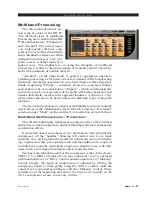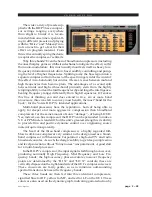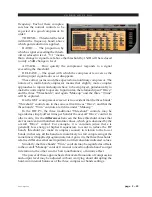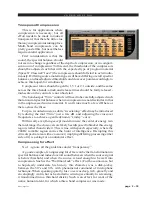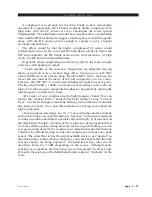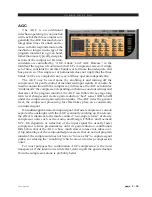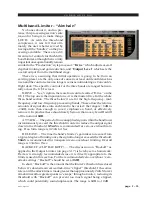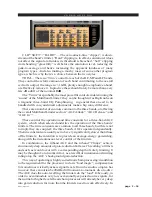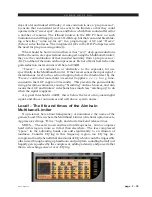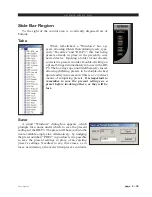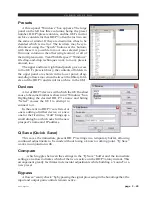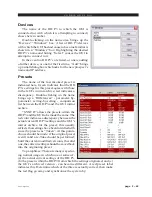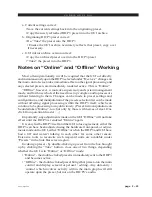
V O R S I S H D P 3 G U I
page 2 – 28
HD P3 / Aug 2006
The wide variety of presets sup-
plied with the HD P3 have compres-
sor settings ranging everywhere
from slight to brutal; it is recom-
mended that some time is spent call-
ing in different presets and playing
with the “Drive” and “Makeup” con-
trols on each to get a feel for their
effect on program material. From
this will eventually spring the desire
to explore the compressor’s entrails.
Why three bands? Even the best of broadband compressors (including
the ones that play games with their sidechains to mitigate the effect) suffer
from auto-modulation; this most usually manifests itself as heavy low-
frequency information (kick drum, bass) audibly controlling and pump-
ing the level of higher frequencies. Splitting away the bass region into a
separate compressor from the rest of the spectrum gets rid of the worst of
this effect (two-band unit) but similar, if lesser, issues between mid and
high frequencies then become plain. The advantages of a second split
between mids and highs (three-band) primarily stem from the highly
tempting ability to treat the mid frequencies (by and large the intelligence-
bearing frequency range) differently from high frequencies. Of course
this line of thinking can and does extend to five, six or more band
processors; three was felt to convey most benefit, the most “band for the
buck”, for the Vorsis HD P3’s intended applications.
Multi-band processors have the reputation - born of being able to
apply far deeper and more aggressive compression than broadband
compressors for the same amount of sonic “damage” - of being LOUD.
Yes, indeed, as a bus compressor the HD P3 can be persuaded to make a
VU or PPM meter stand still, but the unit’s greatest strength is its ability
to provide firm and positive dynamic control over originating source
material quite transparently.
The heart of the three-band compressor is a highly regarded full-
blown soft-knee compressor very similar to the design used as a broad-
band compressor in Wheatstone Corporation’s high-end TV and radio
broadcast consoles. As such, the design’s ability to get deep compression
and level protection without “funny noises” was paramount. A good start
for a multi-band processor.
In the HD P3’s compressor, the input signal is fed through a crossover,
producing nominally High Frequency, Mid-Frequency and Low Fre-
quency bands; the high-accuracy phase-accurate crossover frequency
points are determined by the “HI X” and “LO X” controls; these are
vertically disposed on the right-hand side of the GUI’s compressor screen.
These crossovers are fairly gentle, so as to minimize odd-sounding
spectral transitions between the frequency bands.
These three bands are then fed into three identical compressors,
signified blue for HF, yellow for MF, and red for LF on the GUI. These
colors are also used on the dynamic graph, indicating gain-reduction by














